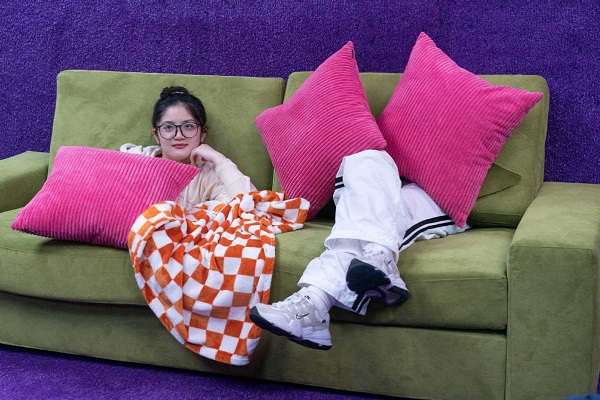Museum fuses reality, illusion to weave magic through maiden venue in Asia

Paradox Museum unveils Asia's first venue in Shanghai Huashi Plaza in March. GAO ERQIANG/CHINA DAILY
A fantasy museum unveiled recently in Shanghai challenges the senses and cognition faculty of visitors with a maze of mind-bending illusions and eye tricks, such as water flow at a standstill, walks on ceilings, experience of weightlessness and bodies disappearing in half.
The Paradox Museum, which has garnered acclaim for its immersive fusion of technology, has received over 2.7 million visitors worldwide since it was established in 2018.
This is, however, its first step into China, and is located in Shanghai Huashi Plaza on Huaihai Road.
The 1,300-square-meter venue was unveiled at the end of March and features over 60 illusions, holograms, installations, and exhibits, providing tailor-made experiences for all individuals and groups.
The museum's emphasis on crafting paradoxical experiences is aimed at challenging conventional perceptions and inspiring visitors, particularly children, to question, think critically and innovate.
Headquartered in Greece, with a research and development center in Croatia, it now has 15 experience centers in cities including Miami and Las Vegas in the United States, Stockholm, Paris and Barcelona.
According to the operator, the unveiling of Asia's inaugural museum signifies a momentous milestone in its global expansion endeavors.
"Paradox Museum is a unique concept. We started in Europe and now we are global, and our goal is to get people excited, involved and creating magic," said Pavlos Kontomichalos, Paradox Museum Asia cofounder and CEO.
"As a global brand, Paradox Museum needs to be everywhere. Shanghai is an amazing city. I feel that Shanghai is where all the trends start, so there is no better place in Asia than Shanghai to bring this experience to the people," he said.
The design of Shanghai's center incorporates traditional Chinese philosophy, with each thematic zone representing one of five elements — metal, wood, water, fire and earth.
Visitors to the museum can immerse themselves in a variety of interactive exhibits, including the "Water and Laser Paradox" and the "Butterfly and RGB Mural Room".A standout feature is the Zero Gravity Space, where visitors can experience the sensation of weightlessness typically only felt in space.
In honor of the Year of the Dragon, the museum has curated a special room dedicated to this symbolic creature — the "Dragon Year Commemorative Room".
The customized experience zone enables visitors to immerse themselves in the dragon's riches and power.
"We have experience from around the world, so we combine all of this to see what people really like. But in Shanghai, we went beyond that and did some local research to understand people's needs," Kontomichalos said. "People here don't want to see the things they can go and see, they want to experience things that they have to travel to see. So we decided to bring much more of the foreign global experience while introducing a very incredible concept."
During the team's research, Kontomichalos found that the local market has changed in the past few years. "There's no room for middle products. You have to provide either high-end or something unique."
This change also prompted the team to further explore unique experiences for local consumers.
Kontomichalos said he remains confident about the Chinese market and expects the Paradox Museum to enter key locations in China within three years.
"We are not going to open right away in the cities around Shanghai, because we want people to come here. But Beijing, Chengdu and Shenzhen are markets that we definitely like to explore," he added.
The museum has set a goal of expanding to 30 centers worldwide by the end of 2024.
(Updated on April 16, 2024)